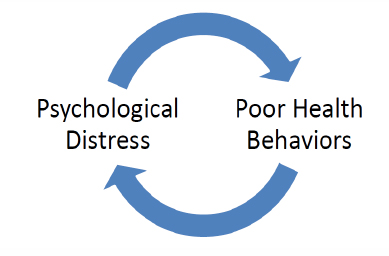284 Epidemic of Psychological Distress
Based on research done by Baxter, Amanda. J., Scott, Kate. M., Ferrari, Alize. J., Norman, Rosana. E., Vos, Theo., & Whiteford, Harvey. A. (2014) written by Bethany Wellman, M.S.
With daily news of war, violence, and disasters, are the rates of clinical depression and anxiety on the rise over the past few decades?
Multiple international researchers examined over 200 world-wide studies on anxiety and depressive disorders between 1990 and 2010 as well as surveys of general health and psychological distress. Overall, no evidence demonstrated an increase in major depression (currently at 4.4%) and anxiety at 4.0%. All increases in numbers were due to population inflation. Yet, there is evidence for a rise in psychological distress, including feelings of excessive worry and unhappiness but not to the point of a clinical diagnosis. Increased distress may be due to technology impacts (such as less sleep, less physical activity) and higher rates of obesity with physical consequences. Increased public awareness of anxiety and depression and misinterpreting distress as severe problems, may lead to our belief in higher rates of psychological disorders.
Rates of clinical diagnoses of anxiety and depression are in fact not on the rise, but psychological distress is. Professional psychological help for clinically diagnosed anxiety and depression are effective. You can also consult on steps to handle your stress. Eat healthy, exercise, get sleep. Nurture your social relationships.
References:
Baxter, A. J., Scott, K. M., Ferrari, A. J., Norman, R. E., Vos, T., & Whiteford, H. A. (2014). Challenging the myth of an “epidemic” of common mental disorders: trends in the global prevalence of anxiety and depression between 1990 and 2010. Depression and Anxiety, 00, 1-11.





